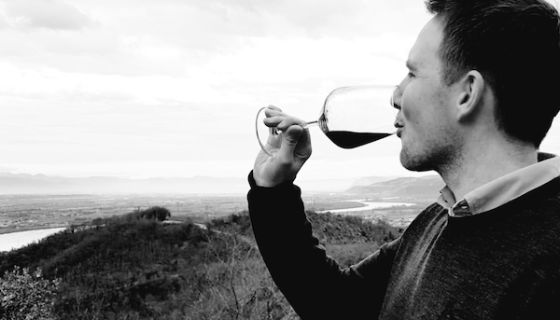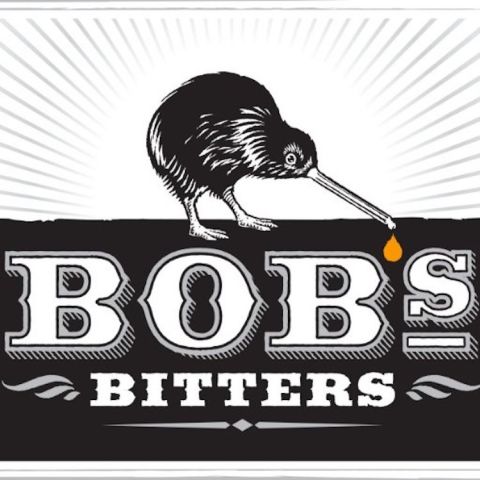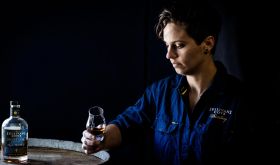Congratulations everyone, we made it through! Christmas, New Year’s Eve and their indulgences are now firmly under our belts. Quite literally. [See, for example, today's Truffling for Romanée-Conti 1978, for instance – JR] Many of us will have welcomed the new decade with a cocktail … one of guilt, penance, and promises to look after ourselves better.
If you are planning an alcohol-reduced start to 2020, I can’t promise to join you; I’ve earned enough smug points to last quite a while. Back on Good Friday, I decided to remove alcohol from my life from then until my 40th birthday on 4 December. For a reminder, here’s my original article.
I went through with it, too. I made it through the 228 days without any slip-ups (well, almost). My liver and my wallet are in a healthier state than they were in April, and I learned a lot. I also assembled a solid list of the best non-alcoholic drinks for keeping abstinence interesting. Below are potted highlights of my experiment, followed by five of the best.
The temptations
Overall, it was easier than expected to abstain for an extended period. On various specific occasions though, I thought of, talked of, or caught sight of wines that were seriously tempting. Sometimes I even got close enough to smell them – all the more tantalising. However, the only flavour memory that repeatedly tempted me was of a long-time favourite: Kumeu River Hunting Hill Chardonnay.
But the temptations didn’t always come from directly encountering a specific wine. Each month brought moments where general temptation was created by social or environmental factors: The Cognac Show in May; visiting Valtellina wineries in June; those sweltering hot evenings in late July which begged for chilled rosé or pilsner (38.7 °C/102 °F on 25 July set a new British temperature record); fresh crab sandwiches by the Cornish coast in August; the Roederer Awards in September; the Liv-ex annual tasting and quiz in October; a San Leonardo vertical tasting in November.
Climbing back on the wagon
In December, on the final day of the experiment, Justin Howard-Sneyd MW reminded me that after the extended absence I might not even like alcoholic drinks any more. This is certainly a known phenomenon, but – I’m happy to report – not one that affected me. He also echoed a common question: which special wine I would choose to mark my 40th birthday, and the end of the experiment? I’d thought long and hard about this already, and realised that I didn’t want to put that kind of pressure on a wine. What if I’d opened a bank-breaking burgundy only to find out I didn’t love wine any more? I broke the drought with a pint of ale with close friends, in a traditional old London pub.
My first post-abstention wines were chosen because I’d been wondering about them for a while, rather than on the basis of glamour (both are more geeky than glamorous).
- First was Adnams Bacchus. Somewhat esoteric, impressively balanced, very refreshing, noticeably Sauvignonesque, and sourced from an organically managed vineyard in the Crouch Valley, Essex. I might have been seduced by the beautiful label design, too. Very much enjoyed!
- Second was Combel-la-Serre Cahors 2015. I bought a case of this when Richard picked it as wine of the week in September 2017. The penultimate bottle had been excellent last Christmas, so I’d been keen to see how this final bottle would turn out.
- Third was a properly ‘serious’ wine – a brilliant surprise from Liv-ex’s CFO Simon Cottee: Ch St-Pierre Sevaistre 1979 St-Julien from my birth year. Against the odds (petit château, short-lived vintage, stored in Simon’s uncle’s kitchen for 30 years), this wine defied Jancis’ otherwise-reliable guideline that wines from this vintage should have been drunk long ago. It had retained impressive acidity and just a whiff of fruit, over a classic base of tertiary, cedar-tinged bordeaux aromas. A worthy way to ease me back into the wine life.
Five of the best
Since my original article on this topic, a surprising number of new alcohol-free alternatives have appeared on the market. It can seem as though a new one appears every day. And, of course, you can mix your own excellent drinks at home, too. My top five tips of both types below:
Bloody Ben’s Bloody Mary Mix
Aiming for a healthy January? You might as well do it properly. Don’t fill yourself up with sugary alternatives, and do get some vitamins into your drinks (willpower is stronger when the body is healthy). This mix is a great base for Virgin Mary cocktails. London brunch-specialist restaurateur Ben Walton created it after years of experience dealing with hung-over customers. One bottle contains enough zing to make thirty drinks. Add it to decent quality tomato juice, a squeeze of fresh lemon, and Bob’s your smug, healthy, lycopene-packed uncle. Available from Ben’s online shop.
Æcorn Dry
Released this summer, this is a great ingredient for those who seek something like a cocktail in a non-alcoholic drink. My preferred combination is the G&T-like combination of Æcorn Dry, Fever-Tree tonic, Seedlip Garden 108 and lemon juice. Available from the Seedlip website.
BrewDog Punk AF
A stand-out among the new alcohol-free beers is Punk AF from Scots-based craft brewery BrewDog. Brilliantly, this beer doesn’t suffer from the problem common to many IPA-style alcohol-free beers, where hoppy bitterness juts out inelegantly, not being balanced out by palate weight or alcohol sweetness. BrewDog seem to have solved this problem with the Punk AF. Available from Waitrose and the BrewDog website.
Estrella Damm Free Damm
For a beer with a relaxed, clean flavour profile, go for Free Damm from Spanish brewer Estrella Damm. It’s accessible (£4 for four from Waitrose/Ocado/DryDrinker), generally well-rounded (refreshing not cloying, beer-y but not cereal-y), and attractively packaged (which helps reduce the effect of standing out as a non-drinker).
In praise of bitters
I’m keen to highlight that giving up booze doesn’t mean resorting to sugary drinks, but Gunners is one non-alcoholic cocktail worthy of your sugar allowance. The recipe dates back to British colonial times, developed to help perspiring, khaki-clad Brits retain stiff upper lips in the heat of the eastern tropics. It originated in Hong Kong, and quickly caught on in India. Simply mix equal parts of ginger beer and ginger ale, a good squeeze of lemon or lime juice, and a few dashes of bitters. Angostura is the everyday/famous bitters, but Bob’s are better:
Bob’s Bitters
Definitely seek these out. They’re hand-made in small batches, and available internationally. Bob makes incredibly pure cardamon bitters, and also grapefruit. Both of these are great for mixing Gunners, and any number of other interesting drinks. Stockists are listed on Wine-Searcher and on Bob’s own website, which also helpfully answers the all-important question: what are bitters?
Bitters are a great way to instantly jazz up various drinks without resorting to booze. Three dashes of bitters will add negligible alcohol to a drink, but stacks of flavour and intrigue. Three dashes of bitters in 300 ml of tonic water creates an excellent drink with about 0.25% alcohol.
When it comes to Gunners, a solid dose of restraint is the final necessary ingredient. This drink is all too easy to gulp down in refreshing, zingy, thirst-quenching mouthfuls.
Happy sipping everyone, and a healthy new year.
Our picture shows Jonathan sipping Hermitage Rouge on the hill of Hermitage high above the river Rhône.














